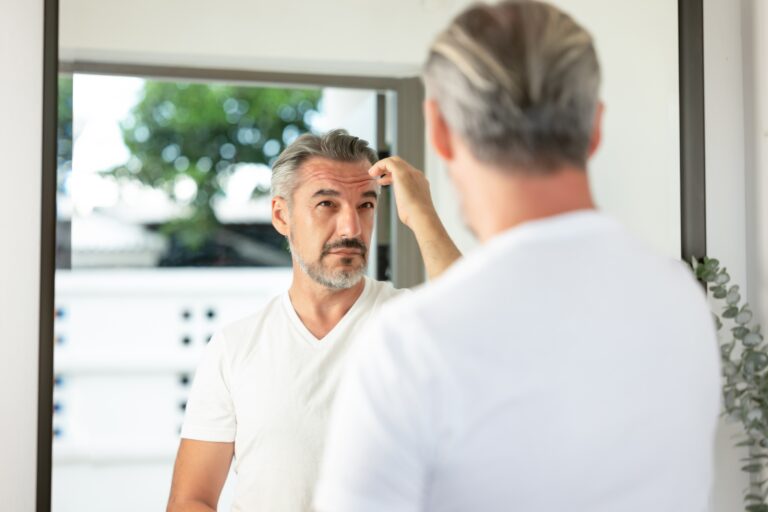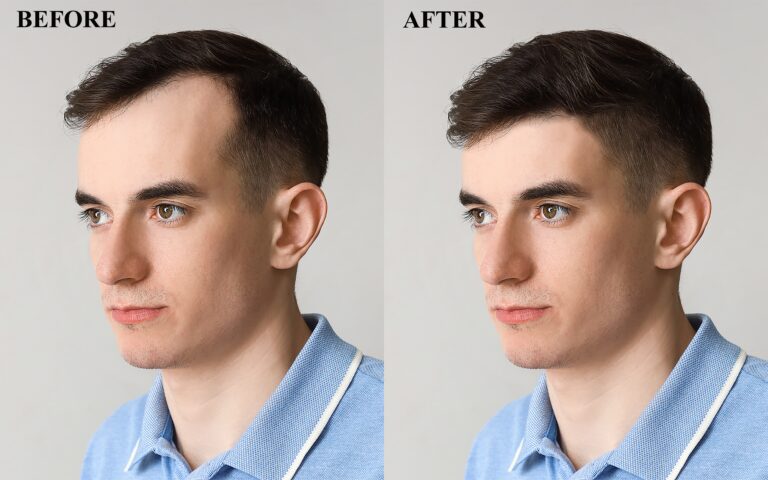When Is the Best Time & Age to Get a Hair Transplant?
Hair loss is a common occurrence among individuals of all ages and gender. However, when the condition worsens, it often negatively affects people’s self-esteem, leading them to hide from social situations.
Luckily, there’s a cosmetic solution for this. So, if you’re wondering: when is the best time & age to get a hair transplant? You can get the procedure done at any time.
That said, professionals advise that you get a hair transplant once you’re 30. This is the age when hair growth slows down.
If you want to know more about when to get a hair transplant, read on!
When Should I Get a Hair Transplant?
People shed at least 100 hair strands a day. This happens due to stress-induced experiences, such as giving birth, losing a lot of weight, or if you’ve recovered from an illness.
The thing is, hair shed is different from hair loss. The latter happens when an underlying factor stops them from growing. It includes taking drugs or medical treatments, using harsh hair products, or even an extremely tight hairstyle.
Either way, these conditions result in an unappealing look for many, especially when their hairline constantly recedes. You can get a transplant immediately if this has been bothering you for some time now.
Should I Get a Hair Transplant?
Whether you get a hair transplant or not is entirely up to your discretion. After all, it depends on your dermatologist or plastic surgeon allowing you to undergo the procedure.
People who have signs of baldness and scalp injuries are the most common candidates for this procedure.
However, before anything else, you should equip yourself with the knowledge that’ll help you further understand how hair transplant works.
The following are the various methods of hair transplant that your dermatologist or plastic surgeon might perform on your scalp:
1. Follicular Unit Extraction (FUE)
Follicular Unit Extraction is a sutureless hair transplant method.
First, the surgeon will shave the back of your head. Next, he’ll do micro punches at the back of your head to extract hair follicles. This step is the most time-consuming because he and his team collect everything individually.
After preparing the graft, they’ll numb the bald area using local anesthesia. Then, they’ll create slits using a scalpel. Eventually, they’ll start placing each hair follicle graft they’ve collected.
This particular hair transplant method takes anywhere from two to eight hours, depending on the size of the bald area they’re going to cover.
Additionally, they don’t do everything in one go—several sessions take place over the course of a few days. It’s rare for a surgeon to perform one “mega hair transplant session” because the procedure will take more than ten hours.
On top of that, it’s an outpatient procedure, so you can go home immediately after the session.
2. Follicular Unit Transplantation (FUT)
Follicular Unit Transplantation, also known as the strip method, is a procedure relatively similar to FUE. It involves the extraction of hair follicles from the back of your head. However, instead of harvesting them individually, they collect them in strips typically an inch wide.
The surgeon will then close the area where he extracted the follicular units with sutures. It’ll leave a scar for quite a while.
Afterward, his team will create a graft using the strips. Next, he’ll start transplanting the hair follicles in the bald area by inserting them on your scalp.
A session of 2,000 to 3,000 grafts can take a whole day. Hair transplant specialists can perform a mega session that uses up to 4,000 grafts too.
It’ll take months before you see the results of the FUT. The appearance, however, heavily depends on your surgeon and his team. They’re responsible for planting and designing your hairline. Plus, they’re also the ones deciding on how your hair would look natural over time.
3. Direct Hair Implantation (DHI)
Direct Hair Implantation is one of the latest and most advanced hair transplant procedures created by the DHI Global Medical Group. Only medical staff trained by the LHRTA are the ones who can perform this method.
Moreover, this procedure is a modified version of the FUE transplant. The surgeon will shave the back of your head and will extract hair follicles using a special tool.
The team will load the extracted hair follicles in a pen-shaped tool and implant it on the bald area. Afterward, the surgeon will secure the site with an antibiotic cream and a bandage.
A DHI session takes about six to eight hours. Still, it depends on how many hair follicles the surgeon will transplant to your scalp. The team often harvests 2,500 grafts per session.
4. NeoGraft
NeoGraft is another modified version of FUE transplant. It’s a method that uses technology created by Venus Treatments.
It’s a semi-automated procedure because the surgeon uses a wand-like tool that extracts the follicles from the back of your head. The device acts like a vacuum that suctions up the hair. It only leaves a minimal scar that doesn’t alter the appearance of your scalp.
Once the surgeon has finished collecting the follicles, he’ll proceed to create microscopic incisions where the hair will go. Unlike the traditional FUE transplant, this procedure doesn’t cause discomfort to the patient because it’s noninvasive.
Depending on how much hair the surgeon will transplant, a session will take four to six hours. Furthermore, it’ll take at least nine months to see the procedure’s full results.
What Is the Best Age for Hair Transplant?
As you age, the follicles on your scalp often lose strands, resulting in thinner hair. With that said, dermatologists and plastic surgeons advise that the best age for hair transplant is 30 years old and above.
Moreover, 30 is also the age when you’ll notice the lack of melanin, which leads to gray hair. Not only is gray hair brittle, but it falls off quickly, resulting in bald spots.
Nonetheless, you can still get a hair transplant if you’re a teen or in your 20s. However, your surgeon might give you other remedies for your issue because your body is still developing. So, there’s a chance that hair loss might stop after a few years.
Some natural remedies include eating high-protein foods, avoiding bleach and high-heat hair styling tools, and using a mild shampoo.
Who’s Eligible for a Hair Transplant?
As mentioned earlier, people of all kinds of ages, gender, and race are eligible for the procedure as long as they have a healthy scalp. Professionals constantly advise that the best age for hair transplant is 30 years old and above.
On top of that, some health conditions, like alopecia, can hinder people from getting hair restoration surgery.
Alopecia areata is an autoimmune disease that forces your hair to come out in clumps. As such, a transplant won’t work because there’s a chance that the follicles will fall right away.
If your disease hasn’t been active for more than two years, the surgeon might allow you to undergo the procedure.
A person with Behavior-driven development (BDD) is also not eligible for a hair transplant. They’re likely to become dissatisfied, often leading to an unending stream of surgeries.
Lastly, a surgeon won’t allow a person with trichotillomania to undergo a hair transplant. This is a disorder that gives an individual a sense of pleasure whenever they pull their hair.
Conclusion
If you’re wondering when is the best time and age to get a hair transplant, well, you can get the procedure done any time. Just keep in mind that professionals would often say that the best age for a hair transplant is 30 years old and above.
If it happens that you’re younger than 30, don’t be afraid to consult professionals. There’s no harm in getting a hair transplant if it’ll boost your self-esteem and improve your overall health.







